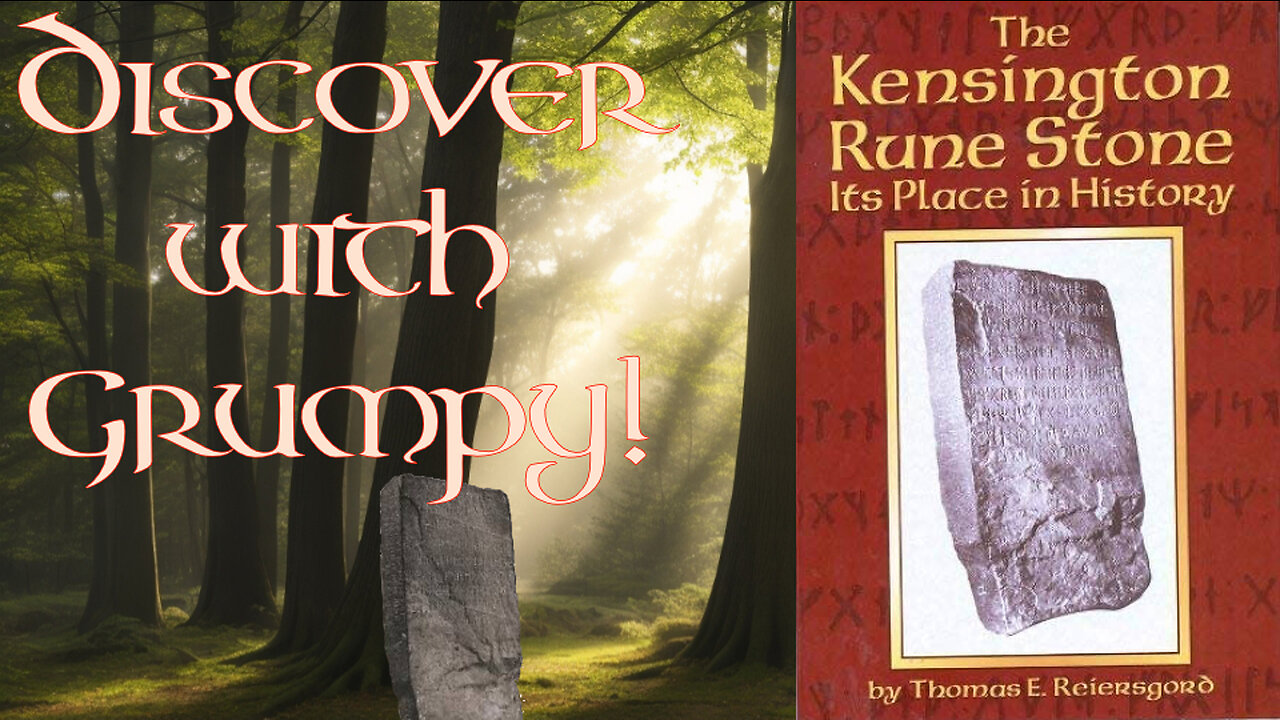Premium Only Content

The Kensington Rune Stone
The Kensington Rune Stone is a controversial artifact discovered in 1898 in Kensington, Minnesota, USA. It is a large, slab-like stone with runic inscriptions carved on its surface. The inscriptions suggest that Scandinavian explorers visited the area in 1362, long before Columbus's arrival in the Americas. The stone has sparked intense debates among scholars and researchers, with some arguing for its authenticity as evidence of pre-Columbian Norse presence in North America, while others consider it a hoax.
Olof Ohman, a Swedish immigrant, was the person who claimed to have found the Kensington Rune Stone. According to his account, he unearthed the stone while clearing land on his farm. Ohman and his sons found the stone tangled in the roots of a tree that had been uprooted by a storm. Ohman, who had some knowledge of runes, recognized the inscriptions and brought the stone home.
The discovery of the Kensington Rune Stone stirred immense interest and continues to be a topic of debate and scrutiny within the fields of archaeology and Norse history. Some experts argue that the linguistic and stylistic aspects of the inscription suggest it is a hoax, while others maintain the possibility of its authenticity, leading to ongoing research and exploration regarding its origins and significance.
Here is a link to an interesting Documentary on the Rune Stone narrated by none other than John Rhys Davies of “Raiders of The Lost Ark” fame.
-
 LIVE
LIVE
Donut Operator
1 hour agoI'M BACK/ CRIME/ GAMEBOY CAMERA CHAD
519 watching -
 LIVE
LIVE
The Mel K Show
57 minutes agoMORNINGS WITH MEL K - Hunters Become the Hunted: The Truth Will Set Us Free 7-24-25
448 watching -
 UPCOMING
UPCOMING
The Shannon Joy Show
1 hour ago🔥🔥While Headlines Scream About Epstein, Obama, Hillary Scandals - Trump’s Digital Leviathan Is Unleashed With The BBB, AI.GOV & Three New Executive Orders🔥🔥
1051 -
 1:00:02
1:00:02
VINCE
3 hours agoAre The Walls Closing In On Obama? (w/ Victor Davis Hanson) | Episode 92 - 07/24/25
154K110 -
 LIVE
LIVE
LFA TV
14 hours agoLFA TV ALL DAY STREAM - THURSDAY 7/24/25
5,016 watching -
 DVR
DVR
Bannons War Room
5 months agoWarRoom Live
29.6M7.32K -
 LIVE
LIVE
The Big Mig™
3 hours agoBarack Obama Goes To GITMO
6,101 watching -

Badlands Media
9 hours agoBadlands Daily: July 24, 2025
36K4 -
 1:09:41
1:09:41
Dear America
3 hours agoBOMBSHELL!! Hillary Was on Tranquilizers!! AND The Clintons Are Being Subpoenaed Over Epstein!!
129K75 -
 DVR
DVR
Benny Johnson
2 hours ago🚨US House Votes to SUBPOENA Bill and Hillary Clinton Over Epstein | DOJ Meeting Maxwell Right NOW
34.5K21